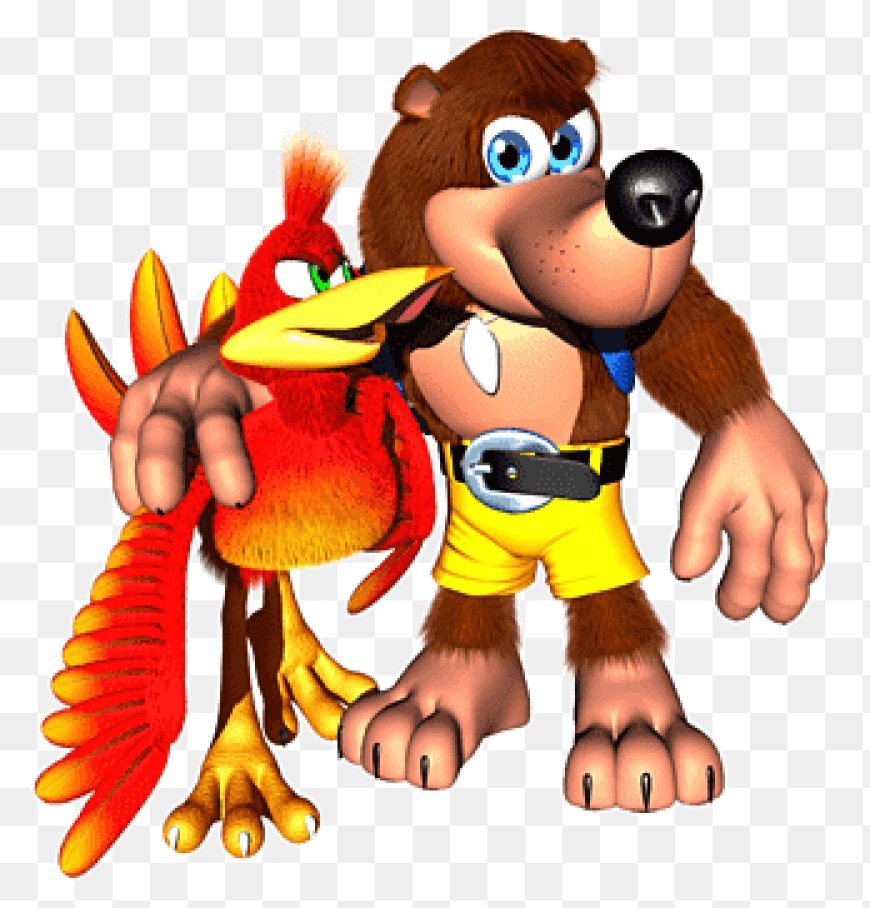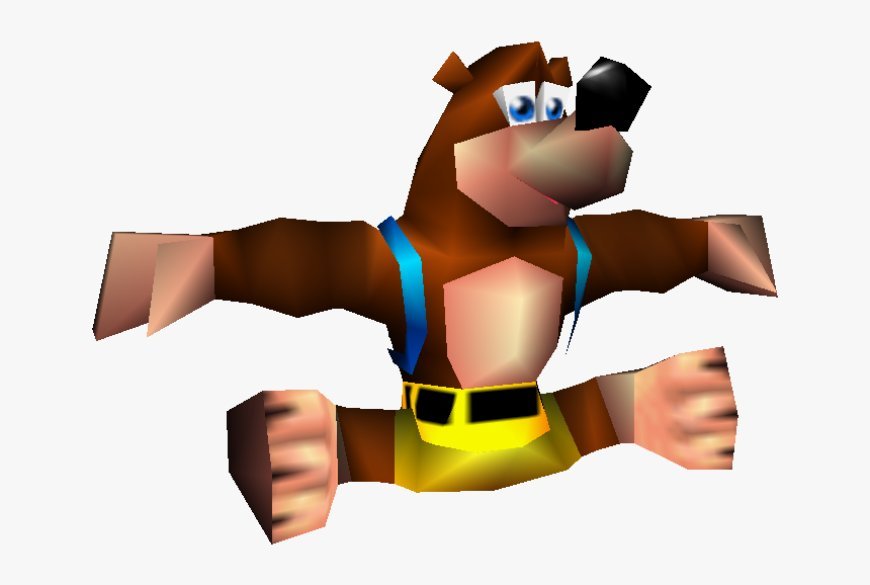Banjo-Tooie: A Bigger, Bolder Sequel That Expands on the Original
Banjo-Tooie takes everything great about its predecessor and amplifies it. Explore the enhanced gameplay, expansive worlds, and deeper mechanics that make this N64 classic a must-play for fans of the original Banjo-Kazooie.

Banjo-Tooie: A Bigger, Bolder Sequel That Expands on the Original
Platform: Nintendo 64, Xbox 360 (remastered), Xbox One, and Xbox Series X/S (Rare Replay)
Developer: Rare
Publisher: Nintendo
Release Date: November 20, 2000 (Nintendo 64)
Introduction
Banjo-Tooie, released in 2000, is the highly anticipated sequel to the beloved platformer Banjo-Kazooie. Developed by Rare for the Nintendo 64, Banjo-Tooie takes everything that made the original game a classic and amplifies it, offering a more expansive, complex, and ambitious experience. With larger worlds, new abilities, and a deeper story, Banjo-Tooie is a sequel that successfully builds on its predecessor while introducing its own unique twists to the formula.
Gameplay and Mechanics
Banjo-Tooie retains the core platforming elements that made Banjo-Kazooie so enjoyable, but it also introduces several new gameplay mechanics that set it apart. The game features a much larger world, with interconnected levels that allow for seamless exploration. This interconnectedness adds a layer of complexity to the game, as players often need to solve puzzles that span multiple worlds, requiring them to backtrack and think strategically about how to use Banjo and Kazooie’s abilities.
Speaking of abilities, Banjo-Tooie expands the duo’s moveset significantly. In addition to the moves from the original game, players can now separate Banjo and Kazooie, allowing each character to perform unique actions independently. This opens up new possibilities for puzzle-solving and platforming, as certain challenges can only be completed by one character or the other. The game also introduces new transformations, courtesy of the shaman Mumbo Jumbo, who plays a more active role this time around by directly controlling various creatures and machines within the game’s levels.
The sheer size of the game’s worlds is both a strength and a potential drawback. While the expanded levels offer more content and variety, they can also feel overwhelming at times, with some areas feeling more sprawling than necessary. This increased scale also means that the game’s pacing can be slower, as players must invest more time in exploring and solving complex, multi-layered puzzles.

Story and Characters
Banjo-Tooie picks up where its predecessor left off, with Banjo and Kazooie once again facing off against the wicked witch Gruntilda. However, this time, Gruntilda is resurrected as a skeletal version of her former self, and she’s more determined than ever to wreak havoc. The story takes on a darker tone than the original, with Gruntilda’s new plan involving draining the life force from the inhabitants of the game’s world to restore her own body.
Despite the darker themes, Banjo-Tooie retains the humor and charm that defined the first game. The dialogue is witty, and the interactions between characters are as entertaining as ever. The game introduces new characters, such as Gruntilda’s two equally wicked sisters, Mingella and Blobbelda, who add to the cast of quirky, memorable personalities.
Graphics and Audio
For a Nintendo 64 title, Banjo-Tooie is visually impressive, pushing the hardware to its limits with detailed environments and a wide range of textures and effects. The art direction is consistently strong, with each level offering a unique visual theme that makes exploring the game’s world a treat. However, the increased graphical complexity comes with some performance issues, including occasional frame rate drops, particularly in the more crowded areas.
The audio in Banjo-Tooie is as outstanding as in the original. Once again, Grant Kirkhope delivers a memorable soundtrack that perfectly captures the tone of each level. The music dynamically shifts based on the player’s location within a level, and the sound effects and character voices add to the game’s charm.
Banjo-Tooie – FAQ
1. What is Banjo-Tooie? Banjo-Tooie is a 3D platforming game developed by Rare and released for the Nintendo 64 in 2000. It is the direct sequel to Banjo-Kazooie and continues the adventures of Banjo the bear and Kazooie the bird as they face off against the revived witch Gruntilda and her sisters.
2. What platforms is Banjo-Tooie available on? Originally released on the Nintendo 64, Banjo-Tooie is also available on Xbox 360 through a remastered version, as well as on Xbox One and Xbox Series X/S as part of the Rare Replay collection. The game is also available via Xbox Game Pass.
3. How is Banjo-Tooie different from Banjo-Kazooie? Banjo-Tooie features larger, more interconnected worlds, expanded abilities for Banjo and Kazooie, and more complex puzzles that often span multiple levels. The game also introduces new characters, transformations, and the ability to separate Banjo and Kazooie to solve specific challenges.
4. What is the story of Banjo-Tooie? The story continues from where Banjo-Kazooie left off. Gruntilda, now a skeletal version of her former self, is resurrected by her sisters Mingella and Blobbelda. She plans to drain the life force from the world’s inhabitants to restore her body, and it’s up to Banjo and Kazooie to stop her once again.
5. How long does it take to complete Banjo-Tooie? Completion time can vary, but on average, the main story takes around 20-25 hours to complete. Fully exploring the game’s large worlds and completing all side content can extend playtime to 30-40 hours.
6. Are there new abilities or moves in Banjo-Tooie? Yes, Banjo-Tooie introduces several new abilities, including moves that allow Banjo and Kazooie to separate and perform tasks individually. The game also expands on the transformations introduced in the first game, with new forms that offer unique gameplay experiences.
7. Can I play Banjo-Tooie on modern consoles? Yes, Banjo-Tooie is playable on modern Xbox consoles through the Rare Replay collection, which includes a remastered version of the game. It is also available on Xbox Game Pass.
8. How does the game’s world differ from Banjo-Kazooie? The worlds in Banjo-Tooie are larger and more interconnected than those in Banjo-Kazooie. This interconnectedness means that players often need to revisit previous levels and solve puzzles that affect multiple areas of the game.
9. Does Banjo-Tooie have multiplayer features? Yes, Banjo-Tooie includes a multiplayer mode that allows players to compete in various mini-games and challenges against each other.
10. Would you recommend Banjo-Tooie to new players? Absolutely. Banjo-Tooie is a fantastic sequel that builds on the original game’s strengths while introducing new elements that make it feel fresh and engaging. Whether you’re a fan of the first game or new to the series, Banjo-Tooie offers a deep, rewarding platforming experience that is well worth playing.
Conclusion
Banjo-Tooie is a worthy sequel that takes the foundation laid by Banjo-Kazooie and builds upon it in meaningful ways. The game’s expanded worlds, deeper mechanics, and more intricate puzzles make it a more complex and challenging experience than its predecessor. While the larger scale and increased difficulty may be daunting for some players, those who invest the time will find Banjo-Tooie to be a richly rewarding platformer.
Whether you’re a fan of the original or new to the series, Banjo-Tooie offers an adventure that is both familiar and refreshingly new. It’s a testament to Rare’s ability to innovate within the platforming genre and remains a standout title in the Nintendo 64’s library. If you’re looking for a game that combines nostalgia with innovation, Banjo-Tooie is a must-play.








